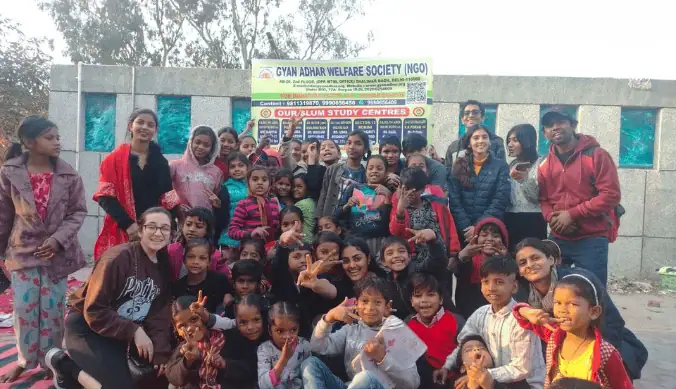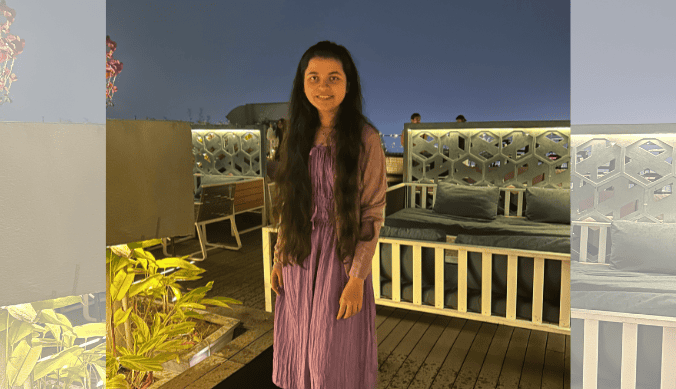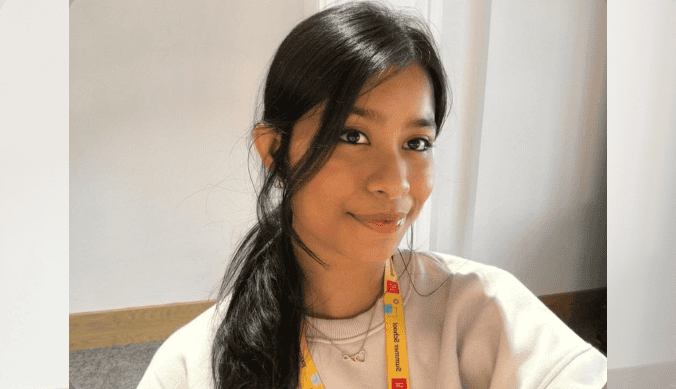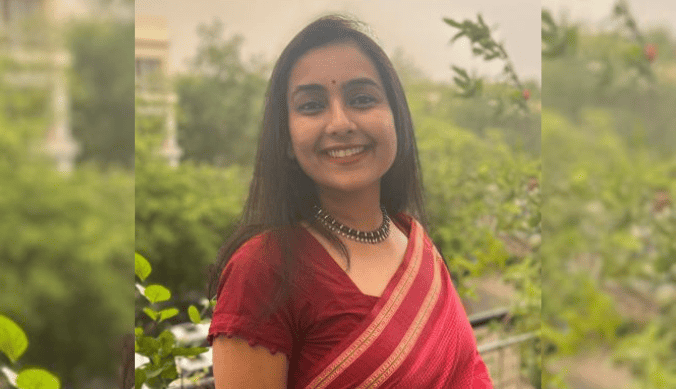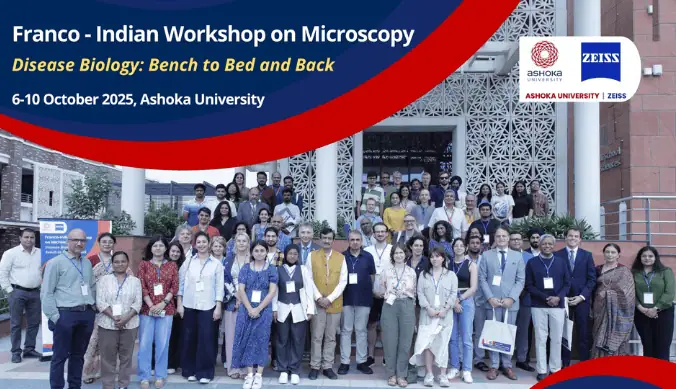“No One Owns the Sky, It’s Shared by Everyone”: Brian P Schmidt and Raja Guha Thakurta Talk About Cosmos
What do dark matter, curiosity, and comet collisions have in common? Professors Brian Schmidt and Raja Guha Thakurta share stories and life lessons in this special podcast from Ashoka University.
Ashoka University hosted two globally renowned astrophysicists – Nobel Laureate Professor Brian P Schmidt and Professor Raja Guha Thakurta, Chair of Astronomy at UC Santa Cruz. In a wide-ranging conversation, they spoke about dark matter and dark energy, surprising moments in their research journeys, and the importance of nurturing curiosity in young minds. From cosmic mysteries to personal reflections, the dialogue offered a rare glimpse into the human side of science.
Astronomy is mysterious in many ways. Brian, your work focuses on the expansion of the universe, which you say is happening at a rapid rate. How does that impact our lives, and how would you explain this concept to someone who isn’t an astrophysicist?
Brian- It turns out you can explain it to a lay audience quite effectively, but it takes about 50 minutes! I’ll actually be giving one of those talks here on Wednesday night. You need to take people through the history of how we got to where we are today. The story of the universe is actually quite intuitive, with a few surprises along the way. It’s very appealing and starts to make sense once you hear it.
Most people go through the explanation and come out thinking, “Wow, this is the universe I live in.” We’re just a tiny speck in this vast universe, and yet we’re somehow able to understand so much about it. Of course, some mysteries remain, but we’ve made tremendous progress in understanding our place in the cosmos. That’s very empowering and captivating. In the end, it’s a story that gives people a sense of what humanity is capable of.
We have a lot of problems to solve, and staying optimistic isn’t a bad thing right now. It’s also humbling to realise how minuscule we are, and that the universe doesn’t particularly care about us. But that’s useful knowledge too.
How would you differentiate between dark matter and dark energy?
Raja- I use a one-liner when I talk to my students: “Dark matter sucks, and dark energy is truly repulsive.” They have opposite effects. Dark matter pulls things in; its gravity works just like the gravity of ordinary matter, like that of the Sun or the Earth. But dark energy has an anti-gravity character; it pushes things outward. In Einstein’s equations of general relativity, they appear on the right-hand side but have opposite effects.
Brian- About 95% of the universe seems to be made up of dark matter and dark energy. As Raja mentioned, they have competing effects but are unified by the term “dark.” The reason they’re called “dark” is that the only way we know they exist is by observing how they affect the universe on large scales. We can’t detect them in labs on Earth, at least, not yet. We’d love to, but for now, we know of them only through astronomy.
Would you say astronomy not only leads to technological spinoffs but also helps us understand our past and possibly our future as well?
Brian- Yes, absolutely. Another important aspect of astronomy is that it’s global. No one owns the sky, it’s shared by everyone. Humanity has rallied around the skies for our entire existence. Even today, Russian and American scientists can collaborate on space research, even if they can’t work together in other fields. So astronomy is also a kind of global commons, something very few other subjects have achieved over hundreds of years. It adds yet another dimension to its value.
Raja, you moved your focus from our own galaxy to Andromeda. Why did you choose Andromeda, and what makes it so fascinating?
Raja- One of the challenges in studying our own galaxy is that we’re stuck inside it. We don’t have a long enough selfie stick to see ourselves from the outside! Andromeda gives us that vicarious “selfie stick.” We can see individual stars within it, but also the entire structure as a whole.
The analogy I like to use is this: imagine being stuck in your bedroom your entire life. The walls are translucent, you can kind of see into the next room, but not clearly through the whole house. You don’t really know what your house looks like from the outside. Your best bet is to look out the window and observe the houses nearby. If you live in a condo complex, chances are those houses are similar, so by studying your neighbour’s house, you learn something about your own. That’s what Andromeda is for us: a neighbouring galaxy that helps us understand our own.
While making your observations or extracting data from telescopes, have you ever come across a surprise that made you go, “Wow, I didn’t see that coming”?
Brian- Yes! I remember one such moment clearly. I was out observing supernovae in 1994, and I got a call from a man named Brian, he’s since passed away, who worked with the IAU Circular, the team that tracks comets and asteroids.
He said, “I need you to point your telescope at this patch of the sky and tell me what you see.” So I did. I took a picture, and there were seven puffy balls in a row in the image. I had never seen anything like it. I called him and said, “What on Earth is this?” He laughed and said, “Oh, it’s real.” Turns out, it was a comet that had passed by Jupiter and broken up into a string of fragments, which later became known as Comet Shoemaker-Levy 9. He asked me to immediately report all the positions of those fragments. So that picture I took became one of the confirmation images of the comet, an unforgettable surprise.
Raja, did you also witness that moment? Or have you had a similar experience?
Raja- I do remember the Shoemaker-Levy 9 moment very well. The Hubble Space Telescope captured incredible images of the impacts. What happened was, Jupiter’s differential gravity broke the comet into pieces, like beads on a string. As each piece crashed into Jupiter’s atmosphere, Hubble took images and spectra to study the resulting chemical changes.
It was like watching a live experiment unfold in space. Jupiter was essentially throwing rocks at itself, and the comet fragments broke apart and were swallowed one by one. That year, 1994, was my only year working at the Space Telescope Science Institute. Hubble had just been repaired in December 1993 and received its corrective optics. The images of those temporary dark spots on Jupiter’s surface were amazing. It was like seeing ripples in a pond gradually fade away. The chemistry and physics of that ripple fascinated me. Very few things in astronomy happen on human timescales, but this was one of those rare exceptions.
Since astronomy is so mysterious, there are often myths around it. What are some common myths or misconceptions you hear about astronomy and astrophysics?
Brian- There are many misconceptions, but one of the biggest involves black holes. For example, if the Sun were to suddenly, by divine intervention, turn into a black hole, the sky would go dark, but Earth would continue in its orbit unchanged. That’s because the gravity of the black hole would be the same as the Sun’s, assuming it had the same mass.
People often think black holes suck things in like a vacuum cleaner, but they don’t. They’re not any more “hungry” than the Sun. Now, you can get a lot closer to a black hole before weird things happen, so yes, some extreme phenomena can occur. But the core gravity itself is not some magical force.
Raja- Another thing I encounter a lot, especially coming from India, is people confusing astronomy with astrology. One is a predictive belief system, and the other is a rigorous scientific field.
I know almost nothing about astrology, so I can’t comment on its methods, but I know enough to say they are completely different disciplines. In fact, I’ve stopped using the word “astronomer” and prefer saying “cosmologist” or “astrophysicist” because of the confusion.
Brian- But then you have the problem of people confusing cosmologists with cosmetologists! Which is funny because I know absolutely nothing about hair. There’s danger in every direction!
Raja- Yes, cosmetology and cosmology are both about the effects of time and gravity, just on very different scales!
Raja, have you ever been involved in a video game or any popular media?
Raja- Yes, actually! I was consulted for a game called ‘Mass Effect: Andromeda’. I’ve never played it, but during development, they asked me questions about the Andromeda galaxy. I was pleasantly surprised to see that what they wrote down from that interview was super accurate. They clearly valued factual precision and understood what we discussed very well. But to Brian’s point, I encourage people to be curious. Movies are meant to inspire imagination, not to be taken literally. They do a great job at that, and that’s their strength.
Brian- Exactly. I enjoyed Interstellar. I wasn’t sitting there thinking, “Let me write to Christopher Nolan and correct him.” You just have to accept it’s not a scientific journal, and that’s fine.
It can be hard for students, or even adults, to distinguish between science and fiction, especially if they haven’t been educated in astrophysics. In India, for example, astrophysics isn’t widely taught in schools. So, when do you think students should begin learning about astronomy?
Raja- The foundational subjects for astronomy are math, physics, and a bit of chemistry, which are taught well in most school systems around the world, including India. Personally, I got interested in astronomy just by picking up a book at the library. The first one I read was Stellar Interiors by Ivan Novotny. It was way too hard for me at the time and should have discouraged me, but it didn’t!
My advice to students is: study beyond your school curriculum. Don’t let your education be limited to board exams or syllabi. The things you learn on your own, driven by your passion, are the ones that stick with you for life.
Self-paced learning is powerful. When you turn the page because you want to, not because the teacher told you to, that’s when real learning happens.
Brian- I completely agree. Astronomy can be a great hook, especially for younger students, to get interested in science, physics, math, and the broader scientific method. In Australia, astronomy is part of the primary school curriculum, especially for ages 5 to 12. It’s a great time to plant those seeds of curiosity. But in high school, it may not always fit into the standard structure. Still, there are plenty of ways to learn outside school. And there are many other free courses out there.
Like Raja said, it’s important to learn because you love it, not because you’re preparing for an exam. Learning shouldn’t feel like you’re staring down the barrel of a gun. That’s not the way I was raised to learn, and I hope students everywhere can discover joy in curiosity.
Brian, what stood out to you about Ashoka University?
Brian- I’m brand new here, but I’ve been very impressed. Ashoka represents a new kind of Indian university, one that focuses on the liberal arts, social sciences, and critical thinking, in addition to STEM. India already has strong institutions in engineering and science, but to build well-rounded leaders, you need universities like this, pan-disciplinary institutions that prepare students not just for jobs, but for thoughtful leadership.
Ashoka is only ten years old, and yet it already feels like it’s shaping a new path. My own university is just turning 80, which is still young by global standards. I’m very curious and hopeful to see where Ashoka will be in 15 or 20 years. India needs many more such institutions to meet the challenges and aspirations of the next generation. And I believe Ashoka is just the beginning.
Raja, you’ve been involved with Ashoka and the Lodha Genius Programme, especially through partnerships with high school students. What stands out to you about the University and the programme?
Raja- This is actually my third visit to Ashoka, and every time I come here, I think, I wish I had this kind of education when I was in college. My experience was the opposite: I studied only three subjects, physics, chemistry, and math. I didn’t have the breadth or space for liberal arts or critical thinking.
Ashoka students are getting that chance through the university, and now also through the Genius Programme. We’re partnering through both Shadow the Scientists and the Science Internship Program, and for the first time, four students from Ashoka will be travelling to Santa Cruz this summer. They’ll spend seven weeks doing real research with peers from around the world. I can’t wait to hear about their experiences; it will shape how we scale this in the future.
What’s one life lesson you’d like to share with young listeners? Something that helped you in your own journey?
Raja- I’ve been lucky to follow my heart, not just in astronomy, but also in education and art. My love for astronomy came from deprivation. I grew up in Calcutta, where you couldn’t see the night sky. So I found the stars in books and at the planetarium.
My advice? Don’t give up on your dreams. The path won’t be linear, and it won’t be easy. But if your heart’s in it, it’s worth it.
Brian- I’ll echo that: have confidence in doing what you love. Don’t worry too early about whether it’s practical. When I started astronomy, I didn’t think I’d be an astronomer; I thought I’d gain useful skills, and I was right.
There isn’t one right path in life. There are many good ones. Every hand can be a winning hand if you play it well. So be bold, be curious, and trust yourself to shape the journey as it comes.
Study at Ashoka








